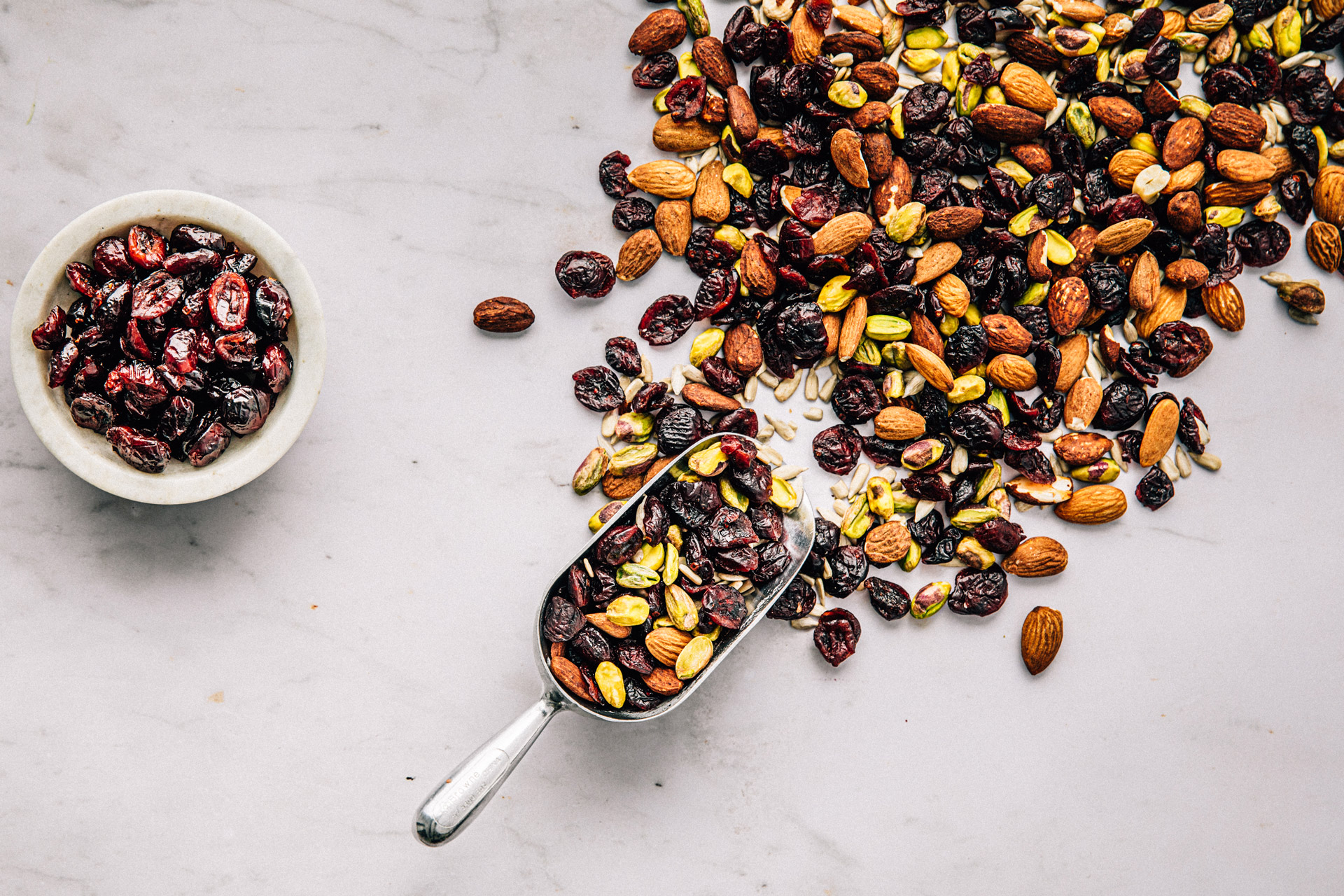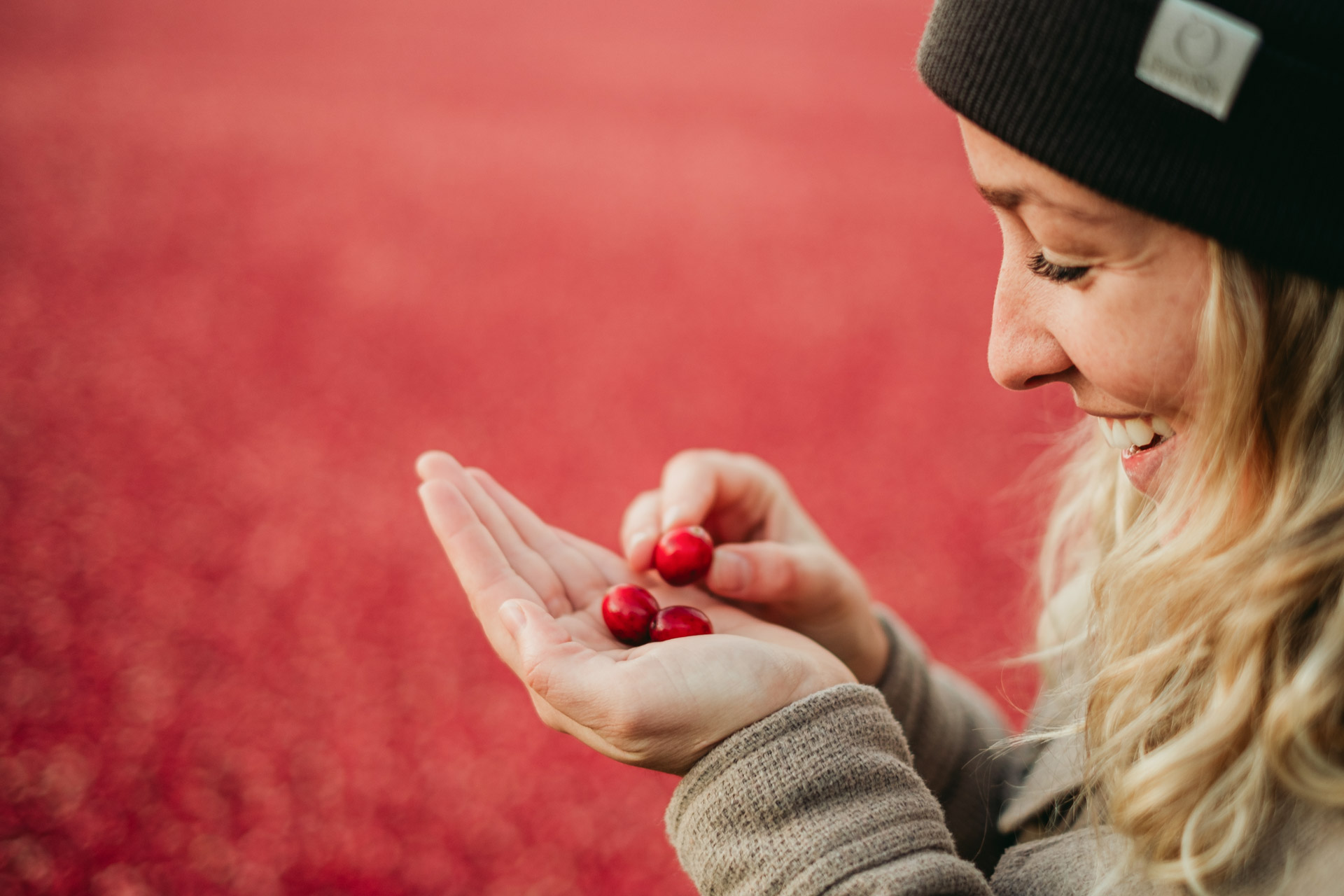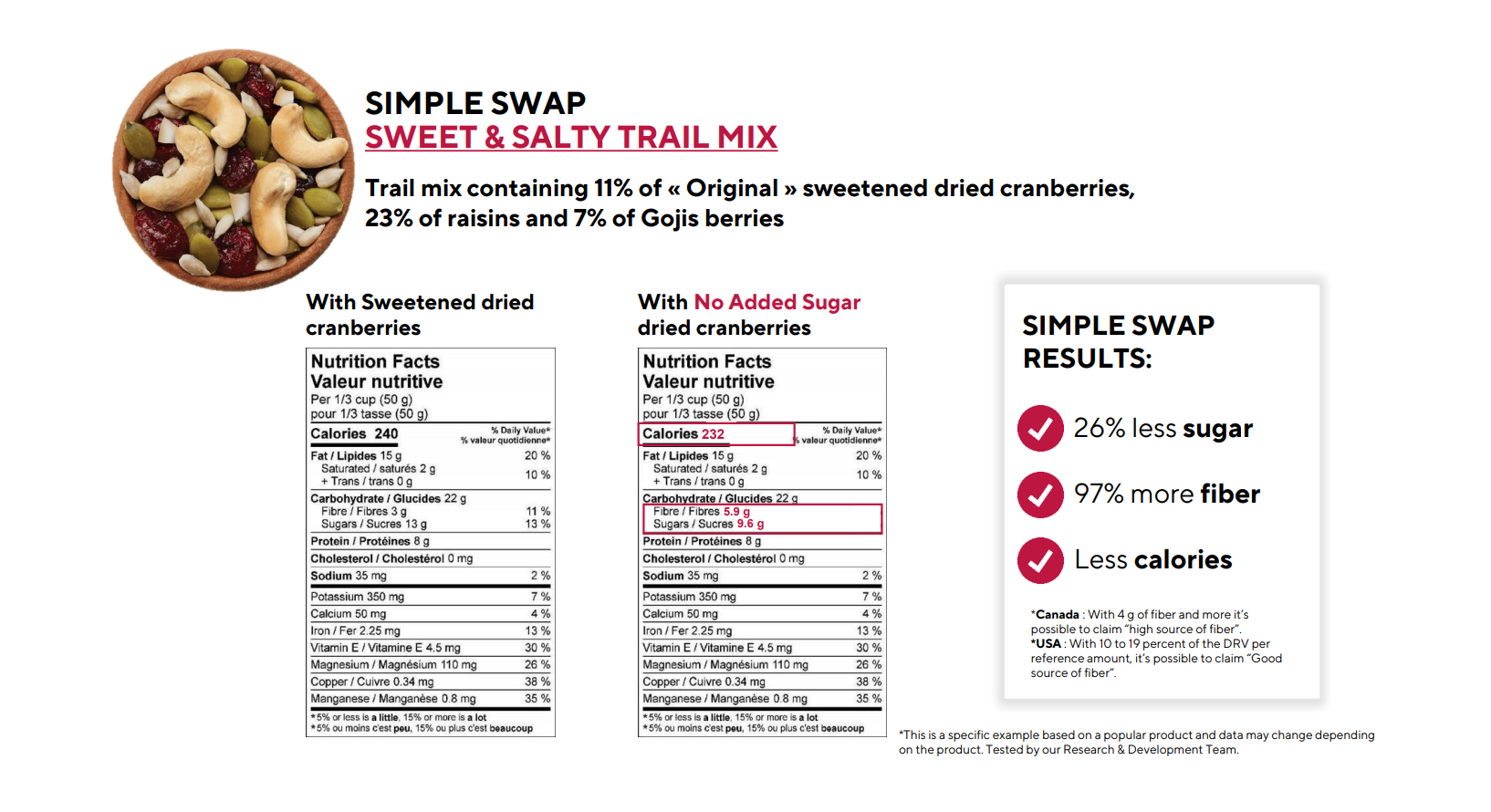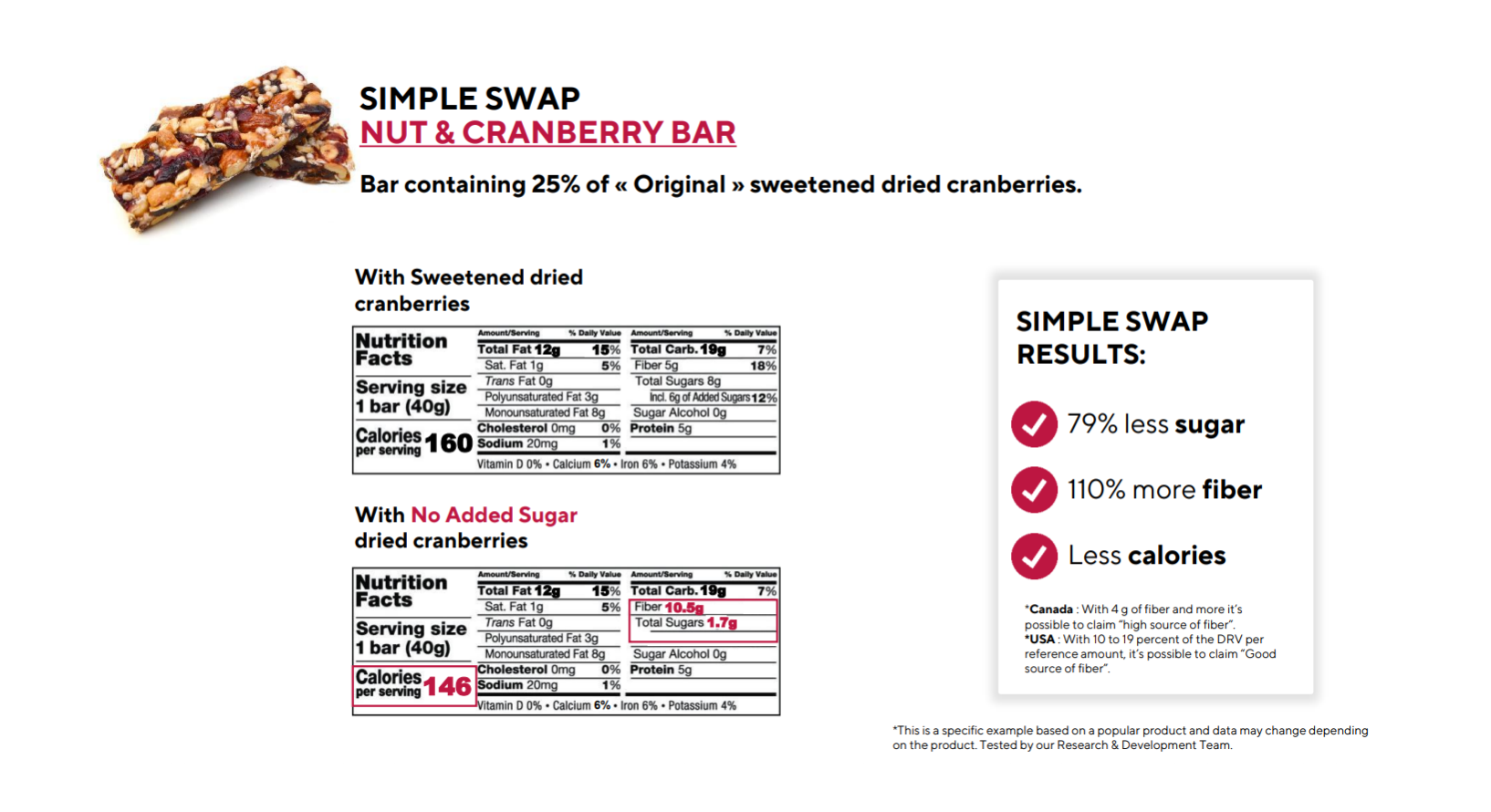
Consumers are more demanding than ever. That means brands have to clear even higher bars to stand out on crowded shelves. How do the savviest ones up their games? By delivering more nutritional value while maintaining the taste and texture consumers expect. Can any single ingredient check all those boxes? Innovative dried cranberries can.
The average “civilian” may never set foot in an R&D lab. But food professionals who spend their entire careers there know: Consumers set today’s product-development agenda.
Just ask Stéphanie Bernard. As R&D director for products and innovation at Quebec-based cranberry producer Fruit d’Or, she’s witnessed firsthand just how much consumer expectations are rising, and how they’re tightening their focus on “everything from the nutritional aspects and origins of a food to its price, quality and label claims,” she says.
Yet at the heart of it all, Bernard maintains, “Taste and freshness remain the main drivers of product purchase. And if those qualities aren’t there, consumers won’t come back.”
All of which leaves brands facing an unenviable task: aiming their R&D efforts at the moving target that is the contemporary consumer.
How’s a product developer to hit the bullseye every time? By formulating with multitasking ingredients that check multiple R&D boxes at once—ingredients like unsweetened and soft dried cranberries.

In this together
Of course, “health” doesn’t mean what it used to, now that consumers apply it not just to the state of their own bodies, but to that of the planet as well—and to how a food’s path from soil to shelf affects it.
Indeed, Bernard points out, “shared planet” led Innova Market Insights’ top-ten trends for 2022 thanks to the ever-stronger influence that personal and social values exert on consumers’ food and beverage choices.
“It’s a back-to-basics philosophy that’s rooted in sustainable consumption and production,” she believes. “The idea of ‘doing more—and better—with less’ is at the heart of consumer concerns today, and trust and transparency between brand and buyer are key not only to helping build better products, but to helping consumers make better choices.”
The new normal
Yet in an era of staggering inflation, even conscientious consumers have limits. So while they may value products that embody their nutritional, environmental and quality standards, “They also want those products to be affordable,” Bernard concedes.
At the same time, COVID-19’s aftershocks still have formerly housebound shoppers craving novelty. “Accelerated by the pandemic,” Bernard says, “they’re hungry for new food and beverage experiences.”
And don’t forget deliciousness. “The organoleptic aspect of a food—which includes flavor, texture, appearance and a sense of ‘freshness’—remains the primary reason that consumers choose a food,” Bernard declares.
No wonder respondents have ranked taste their top purchase driver in each of the 17 years that the International Food Information Council (IFIC) has conducted its Food and Health Survey. “So it’s essential that brands develop products that deliver all of consumers’ higher-minded points, but that also remain tasty and enjoyable to eat,” Bernard says.

Juggling act
That’s no easy feat. But it’s one that starts with brands truly listening to their consumers and taking them into consideration when developing new lines, SKUs or even individual flavor profiles.
“We need to target our efforts to speak to their beliefs and values,” Bernard emphasizes. “And as product developers, we always have to juggle their desires with the needs of product formulation and development.”
Whether that means balancing less sugar with heightened texture, adding fiber while cleaning labels or offering more options without raising price points, doing so is indeed a juggling act for this reason: Even the simplest formulation is a complex system.
Playing dominos
As Bernard explains, “You never know how a formulation will react when you add new ingredients to it.” Alter one element, she says, and a whole series of dominos could tumble.
The upshot: “Each time you develop a new item or reformulate an existing one, you need to validate how a new ingredient interacts with what’s already there, and how it changes factors like texture and shelf life,” she says. “Then you have to determine if those changes fit within the specifications for the product, and for what consumers expect.”
Finally, brands have to contend with the complexities of new-ingredient sourcing and supply chains, pricing, regulatory approvals, label claims—and consumer perceptions. “Will they understand what the new ingredient is?” Bernard asks. “Is it clean-label? Can they even pronounce it? Succeeding on all these counts without swelling a product’s formulation costs is, not surprisingly, sometimes complicated.”
Fruit-forward
That may be the understatement of the era. But fortunately, ingredients exist that make the job easier.
One obvious example: real fruit.
“Consumers understand fruits’ benefits,” Bernard says. “They understand fruit as a natural source of energy and nutrients.”
They also see fruit as “clean” and minimally processed, even when dried—a process that simply removes a portion of the fruit’s water to lengthen its unrefrigerated shelf life, lower its transportation costs and concentrate its nutritional and flavor potential.
“Based on all of this,” Bernard concludes, “consumers recognize that dried fruits are great products—‘permissible indulgences,’ even.”
Seeing red
Yet consumers recognize dried cranberries as particularly special.
“You can’t not notice the small red fruits,” Bernard avers, “and consumers love their bright, tangy taste. Cranberries are naturally low in sugar, too. The whole package lets formulators create healthful, colorful, delicious products.”
But cranberries can be so low in sugar that to maintain their soft texture when dried, processors have to infuse them—usually with sugar.
In an era when lower sugar levels are prized, Fruit d’Or wanted to create an alternative that held onto the cranberry’s soft texture even after drying, but without added sugar. And they wanted to do so while enhancing the cranberry’s fiber content for an even greater nutritional value-add.
So they tackled the challenge by infusing dried cranberries with a combination of resistant dextrin—namely, soluble corn fiber—to replace added sugar and glycerin to optimize product moisture over time. Both ingredients maintain the fruit’s soft texture as effectively as does sugar and add healthful fiber, to boot.
The unsweetened and soft dried cranberries mark a watershed in the dried-fruit space, packing only 2 grams of natural sugar and 20 grams of fiber per 40-gram serving.
“We believe that our organic unsweetened and soft dried cranberries solve perhaps the biggest challenge to meeting current consumer needs—for balance, for options, for nutrition and for sensory appeal,” declares Annie Bouchard, Fruit d’Or’s senior brand manager. “They deliver on nutrition—less sugar; more fiber—but still give formulators and consumers a soft, rich texture and classic cranberry taste. You don’t feel like you’re cutting out any of the indulgence.”
Bernard agrees, adding that baked goods, biscuits and cereals are “perfect candidates for reformulation to reduce sugar and improve fiber. All of these products get a positive response from consumers who seek out their attributes.”
Trail mixes and bars are also ripe for reformulation. In fact, Fruit d’Or’s developed concepts for each application that replace sweetened dried cranberries with the team’s unsweetened and soft dried versions, and in the latter, the simple swap lowered the per-serving calorie count from 160 kcal to 148 kcal, more than doubled the fiber content and cut sugars by a whopping 79%.
Meanwhile, replacement of sweetened dried cranberries with the unsweetened and soft dried alternatives in a sweet-and-salty tail mix brought per-serving calories down from 240 kcal to 232 kcal, resulted in 97% more fiber and cut sugar by more than a quarter.


There are plenty of lessons that Bernard’s extracted from developing Fruit d’Or’s the unsweetened and soft dried cranberries. But one that rises to her mind is that “consumers must be at the heart of product development more than ever,” she says. “Healthful enhancement and taste and texture maintenance are here to stay, and brands need multitasking solutions like our unsweetened and soft dried cranberries—and they need them now more than ever.”
Questions? Please contact our sales team.
It’s the simple everyday things that make our berries so tender, tasty, healthy and give them the perfect texture. Each parcel of land we farm with care and respect. Each extra day we wait to ensure crops are harvested at peak ripeness. Each minute saved between field and freezer. Each berry perfectly preserved. Each unwanted substance detected and eliminated. And each delicious bite our customers enjoy.
